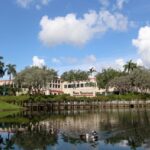As Rep. John Lewis, D-Ga., said on Sidewalk Radio, “Without the arts, without the painting, sculpt pieces, the drawings, without music, dance, theater, or whatever you want to call it, the civil rights movement would have been like a bird without wings. Somehow, and some way, artists were able to tell us something about the distance we’ve come, about our past, our present, but also about our future. It moves people in different ways and in different forms. It may move you to laugh or just to smile. It may move you to cry and shed some tears. But it could move you to stand up and make you more determined to engage in a struggle to make things better for all humankind.”
Preservation, generously defined, is not exclusive to the rehabilitation of structures. It can take on many forms and be accomplished in many ways, so we don’t have to be professionals in historic preservation to contribute or advocate meaningfully or otherwise support the cause. As Lewis articulated, the heart and soul of any movement resides in culture. Turning a focus to the arts and humanities provides an engaging and realistic path forward to realize success in preserving, not only the buildings, but the cultural heritage of Sweet Auburn. There are oral histories to be recorded, pictures to be taken, songs to be played, murals to be painted, traditions to be shared, books to be written, movies and plays to be produced, dances to be danced and immersive programs to be created so new memories can be made. These actions bring us together and demonstrate our commitment to the protection and conservation of an irreplaceable national treasure — in this case, a whole district.
One of the more recent examples of preservation in Sweet Auburn is the District V “Honor” Mural on the sunrise-facing side of the Daily World Building at 145 Auburn Avenue, a historic site in journalism that was a megaphone for the civil rights movement. This collaborative effort brought together the Girl Scouts of Greater Atlanta (which called the building home starting in 1944), muralists The Loss Prevention, designer Brian Simons, cultural developers and preservationists. A work of art for the public good, the mural enables a more aesthetic form of preservation. It honors civil and human rights by featuring Roslyn Pope as a distinguished member of Atlanta’s first Black Girl Scout troop. Pope was the principal author of “An Appeal for Human Rights,” a civil rights manifesto that sparked the Atlanta Student Movement, which contributed significantly to the passage of the Civil Rights Act of 1964. At 50 feet long and 30 feet high, the mural captures a vision of a brighter future and helps to showcase and preserve a story that we should all know about an unsung heroine and champion for social justice and equality.
Another example of the roles that arts and humanities might play in preservation is Building Memories, a podcast series we cocreated in partnership with Georgia Tech and the nonprofit Communities Who Know, Inc. Focused on treasured places, especially in the African American community, the series aimed to draw attention to and help preserve history and culture throughout Atlanta through original content creation. The series brought together our shared goals of historic preservation, history-telling and storytelling in an effort to make a positive impact on historic preservation overall.
More recently, we joined forces again on “Civil Sights.” This book offers an easily accessible platform for encouraging cultural exchange. As the author (Kansas) and cultural editor and contributor (Royster), it is forthcoming from UGA Press and Georgia Humanities in 2025. In essence, then, both “Civil Sights” and Building Memories represent our own passions and personal interests. However, they are also specific examples of how to get involved in preservation without being in the real estate industry.
With a city rich in history, where now our national treasures hang in the balance, we hope our work — both in the built environment and through the arts, humanities, and education — inspires others to join us as kindred travelers in purpose-driven action as we all work together to renew and reignite our commitment to historic preservation.
As critical leverage, The Civil Rights Act of 1964 was a landmark legislative achievement. It stands as a mighty touchstone in the struggle against discrimination based on race, color, religion, sex or national origin. It prohibits segregation and forbids discriminatory practices. Born from the crucible of the civil rights movement and nurtured in the homes, churches, businesses, schools and determined hearts and minds of Atlanta and elsewhere, this act marked a momentous stride toward fostering social justice and equality within American society. On this anniversary, let us come together to rededicate ourselves to its enduring promise for a democratic nation and to renew our commitment to preserve our treasured built environment and our stories.
Gene Kansas is an award-winning cultural developer, preservationist and social entrepreneur and founder of Gene Kansas Commercial Real Estate. Jacqueline Jones Royster is a former Ivan Allen Jr. Chair in Liberal Arts and Technology and Dean of the Ivan Allen College of Liberal Arts at the Georgia Institute of Technology, and as professor emerita at The Ohio State University and Georgia Tech.











